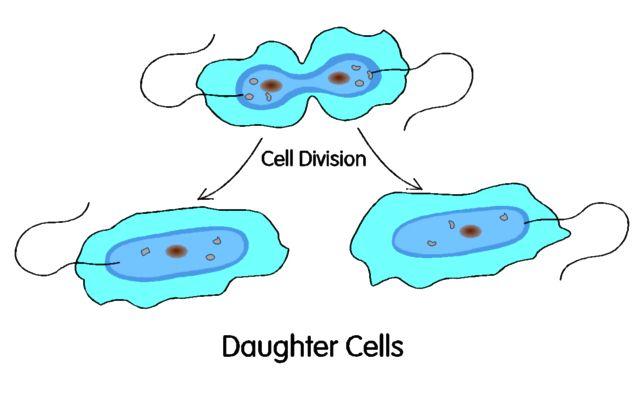Bacteria feed by absorption through their cell membranes
In the first stage, they secrete enzymes (extra-cellular)
which break down the large particulates and solids. Bacteria constantly
produce enzymes. See linked tutorial for more about enzymes.
In the second stage, the reduced particles are absorbed through the outer
membrane where cellular enzymes break down the extra cellular enzymes.
In the third stage, the cellular enzymes are
absorbed into the Inner Cell where Inner Cell Enzymes complete the reduction
of the organic particles or food.
This process will produce CO2 and H2O and
seed bacteria since cell division occurs when sufficient food is processed.
Time and oxygen are very important when bacterial inoculants are employed.
Retention Time measures the amount
of time bacteria are actually present in the water that is treated. In aquaculture,
retention time is normally the length of time the water is used for the
season. Small amounts of bacteria must be added, regularly, for maintenance.
In the case of wastewater treatment (municipal sewage), retention time is
usually measured in a matter of hours. Ideally, the bacteria should have
24 to 48 hours retention time.
When a plant is operating at full capacity,
only a 6-8 hour retention time may be possible, therefore the dosages and
oxygen levels must be increased to compensate for the reduced time. There
are specific Alken Clear-Flo® formulas designed for various industrial
and municipal applications, in addition to the formulas which assist aquaculture
and lake/pond remediation.
Ammonia Control in Recirculating Aquaculture Systems
Intensified aquaculture systems for trout,
tilapia, and many other species bring serious problems of sludge and ammonia
buildup. Fish excrete toxic ammonia. In high fish density conditions, ammonia
levels rapidly become lethal. Waste products must be removed from the aquaculture
system, open pond and closed recirculation systems.
Heterotrophic bacteria (microorganisms which use organic matter for energy
& growth) and autotrophic bacteria (microorganisms which obtain
energy from inorganic materials using CO2 as their sole carbon source) utilize
the organic excretions of the animals as energy sources. Ideally, aerobic
bacteria will liquefy and digest organic nutrients and alleviate much of
the toxic buildup from decomposition. When the desired natural bacterial
populations are insufficient, inoculation with the correct synergistic blend
of active bacteria will enhance the decomposition process.
When ammonia is of major concern, as it is
in recirculating systems, nitrification must be accelerated. The system
should be seeded with an established population of Nitrosomonas and
Nitrobacter, primary autotrophic bacteria found in freshwater, brackish
water, soil and seawater. These two strains, present in commercial formulas
such as Alken Clear-Flo® 1100 and 7110, have been found
to be the most reliable for rapid oxidation of ammonia to nitrate. The seeding
process can also be enhanced by providing additional substrates on which
the bacteria can attach themselves. Nitrifying bacteria have a preference
for smooth black objects.
Nitrosomonas oxidizes ammonia to nitrite
Nitrobacter oxidizes nitrite to nitrate
Nitrosomonas
or Arthrobacter agilis converts high ammonia concentrations to nitrites.
Nitrobacter is inhibited by ammonia, therefore efficient oxidation
cannot occur until high ammonia concentrations have been converted to nitrites
by Nitrosomonas.
Microorganisms in Alken Clear-Flo®
1100 perform within a pH range of 6.8 to 8.5. Optimal pH is 8.2
to 8.3. Warmer temperatures of above 60° F also enhance nitrification.
The size and type of system, and degree of
ammonia present all influence the prescription dosage and application placement.
Normally, treatment once or twice weekly is sufficient, after an adequate
biomass is established. Higher initial dosages are usually prescribed to
rapidly establish a stable biomass.. | 


